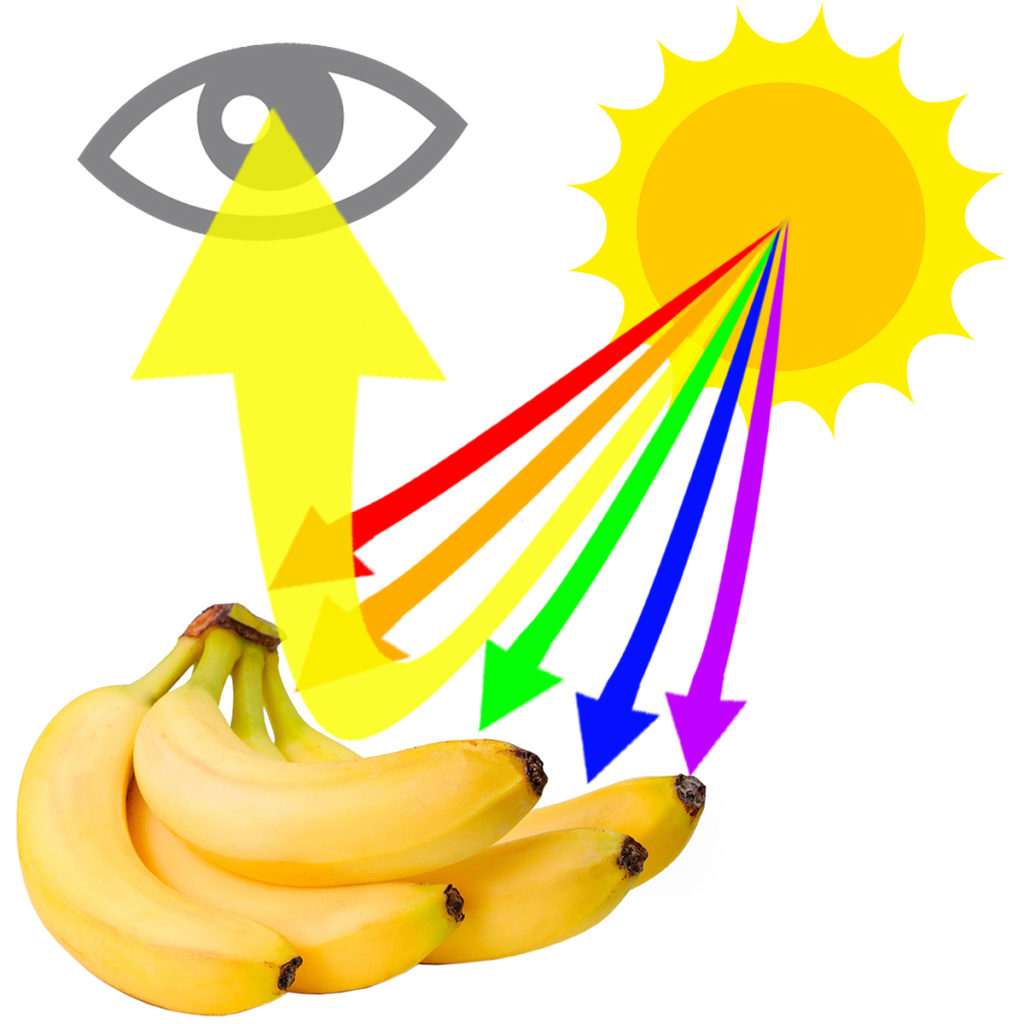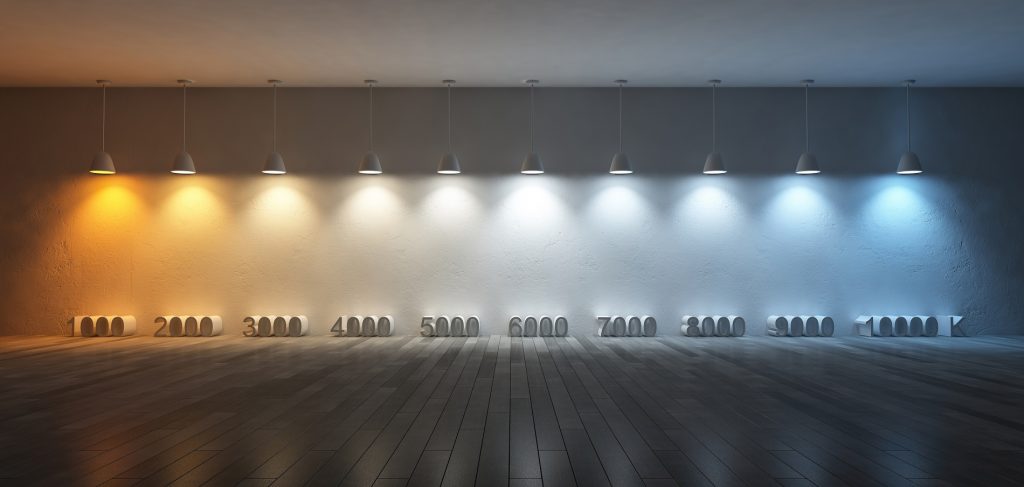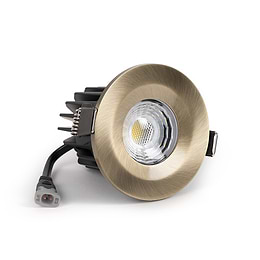Introducing High CRI LED Downlights from Soho Lighting
Introducing High CRI LED Downlights from Soho Lighting
Lighting to Lift Your Mood
The UK lighting supply market is dominated by low CRI LED downlight products. In 2020 it was estimated that over 90% of domestic downlights available on the UK market provided a CRI of less than 82. The growth of LED downlights has been exponential in recent years and low CRI LED chips are now produced in massive volumes at low cost. In recent years break throughs have been achieved in producing high quality LED chips with CRI > 95.
This break-through now enables homes and workplaces to benefit from ultra-efficient LED lighting at higher CRI levels, bringing the benefits of greater clarity, improved colour differentiation and more ‘natural’ artificial lighting. Such lighting enhances the true colour of foods to aid preparation, can help with colour-based tasks such as painting, improved clarity and definition of images and text and lift your general mood and home life.
In 2021 after years of research and development Soho Lighting launched its range of high >95-97 CRI downlights. Our market leading high CRI LED downlights offer a built-in colour temperature changing function so you can set your downlights to warm, daylight or cool. They are fire rated to 30, 60 and 90 minutes and are certified to IP65 making them the perfect choice for Kitchens and Bathrooms as well as rooms where activity, reading or relaxation takes place. The smart lighting choice that will provide at home relief from winter and work-from-home blues.

What is CRI and how does higher CRI in Indoor Lighting Benefit Humans
We can all recall our childhood excitement at the sight of a rainbow and for those who paid attention in physics lessons at school, you can probably recall that it is produced when sunlight encounters rain. The sunlight reflects off the inside of a water droplet, separating it into its component wavelength or colours. Dig a little deeper and you may even recall that the 'colour' of an object is derived from the wavelengths of light that it reflects, as opposed to the ones it absorbs.

Bananas appear yellow as they reflect yellow light from the spectrum.
So what happens to the colour of a banana when viewed with an artificial light source where the yellow colour has been removed from its wavelength? You get a murky green/orange-grey coloured banana and a far less appetising treat!
This same distortion of colour is a problem with many forms of artificial indoor lighting, where the colour spectrum omitted does not represent the full spectrum of coloured light as would be seen in natural sunlight. Such a deficiency not only affects how we perceive colour, it can also render small details, objects and print difficult to decipher as well as negatively affecting our state of mind.
CRI – Colour Rendering Index
CRI (Colour Rendering Index) is a quantitative measure defined by the International Commission on Illumination (CIE) of how faithfully an artificial light represents the full colour spectrum of natural sunlight. 100 CRI is equivalent to natural sunlight and will show the true colours of an object. We experience the effect of low CRI at night when walking under a high-pressure sodium streetlight. Such streetlights have low CRI of around 25 and if you have ever attempted to look at a map under one, you will know just how difficult it is to clearly distinguish text or colour on a page. This is because the light omitted from the streetlight is in a very narrow colour band, meaning little colour or tone contrast is reflected back from the objects it illuminates.
CRI and CIE Ra Value
The value often quoted as "CRI" on lighting products can also be referred to as CIE Ra value, "CRI" being a general term and CIE Ra being the international standard colour rendering index. So a CRI of 80 is the same as CIE Ra 80.
CRI/CIE Ra and colour temperature are different measures of light output. Colour temperature is a way to describe the warmth or coolness of artificial light and is measured in degrees of Kelvin (K) on a scale from 1,000 to 10,000. Typically, Kelvin temperatures for commercial and residential lighting applications fall somewhere on a scale from 2000K sunset white to 6500K daylight white. In this context, the ‘daylight white’ is a reference to its whiteness/coolness, not the amount of colours represented in the spectrum. Think of the different colours of the sun and the sky from sunrise to sunset and you get the idea, the natural sunlight may change in tone, but the CRI remains at 100 throughout the day.

The Potential Health Benefits of Higher CRI
You are probably familiar with the growing concerns around sunlight deficiency, its impact on human emotions and associated conditions such as Seasonal Affective Disorder (SAD). It turns out “sunny disposition” is more than just an expression: Researchers at BYU found an increase of depression in people during seasons with little sun exposure. On the contrary, days with ample sunshine linked to better mental health.
Numerous studies have cited the health benefits of sunlight on humans, which increases the production of beneficial chemicals such as serotonin and nitric acid, leading to improved mood, better quality sleep, improved cognitive function and lower blood pressure.
Early studies into the impact of higher CRI from artificial light on humans is also indicating health benefits linked to improved concentration and mood enhancement. There is evidence to suggest that work productivity is also increased. Whether the body is being tricked into thinking it is in natural light is unclear, however higher CRI also improves colour definition, variation and visibility which might also be a factor.
It is not difficult to imagine how miserable it would be to work indoors under a low CRI streetlight with a gloomy permanent orange glow and little colour differentiation. However, how high does CRI have to be to provide acceptable working conditions for humans? 80 CRI/Ra 80 is considered to be the minimum acceptable threshold for indoor lighting for the home and work environment. But even at 80 CRI/Ra 80 many colours will not be a true representation of themselves as they would be under natural light and this may in turn place a strain on our visual systems leading to increased stress or strain.
[related_products is_auto_added="1"]









